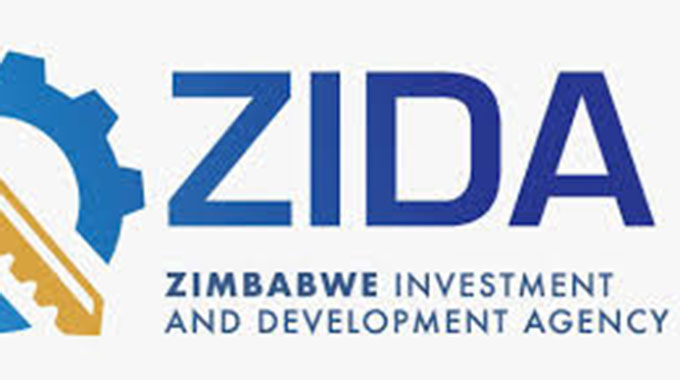Businesses wary over impact of US dollar on competitiveness
Business lobby groups and economists have expressed concern over the widespread dominance of the US dollar, saying it is significantly impairing the overall competitiveness of the economy.
This comes after the Confederation of Zimbabwe Industries (CZI) 2024 Manufacturing Survey Report highlighted high cost of production as the main factor hindering competitiveness, a situation that could significantly limit Zimbabwe’s benefits under the African Continental Free Trade Area (AfCTA).
However, some analysts argue that while the US dollar dominance presents challenges by increasing local production costs and lowering competitiveness, policies supporting de-dollarisation, particularly the tight monetary stance, will help increase the acceptance and circulation of the domestic currency, thereby enhancing competitiveness.
Still, some maintain that Zimbabwe’s competitiveness against regional peers like Zambia, South Africa, and Malawi is fundamentally linked to the dominance of the US dollar, which is driving up local business costs.
They argue that Zimbabwe’s economy, burdened by structural issues like power shortages, raw material scarcity, and reliance on imported inputs, is inherently disadvantaged by using an overly strong international reserve currency like the US dollar. They emphasise the need for Zimbabwean firms to implement “internal devaluation” strategies, such as cost reduction and containment.
However, this presents a significant challenge, considering difficulties due to low-capacity utilisation.
“In my view, the worst enemy for the economy in terms of competitiveness, one of the major drivers (of costs) is the existence of the US dollar in the economy because the US dollar is not a soft currency, it’s a hard currency,” said economist Patience Sandra Makunike. “We need our (domestic) currency, but we need to be productive to defend it. We need to build confidence, we need production.”
The decline in Zimbabwe’s current account surplus, from US$1 billion during the 2018-2020 period when the soft local currency (RTGS) was the major transacting currency, compared to the current US$100 million surplus, strongly suggests a significant erosion of the nation’s competitiveness edge. The dramatic 10-fold reduction coincides with the widespread adoption and dominance of the US dollar within the economy.
The Reserve Bank of Zimbabwe (RBZ) first reintroduced the local currency in February 2019, after a 10-year hiatus, initially called the Real Time Gross Settlement (RTGS) dollar, which later became the Zimbabwean dollar.
In June 2019, the Government briefly outlawed the use of foreign currencies, making the RTGS dollar the sole legal tender. However, the move coincided with a sharp depreciation of the local unit, leading to a resurgence in the widespread use of hard currencies like the US dollar in informal transactions.
Due to the struggling local currency and the economic pressures exacerbated by the onset of the Covid-19 pandemic, the RBZ reintroduced the multi-currency system in March 2020. This officially allowed the use of foreign currencies, primarily the US dollar, alongside the Zimbabwean dollar.
In October 2023, the Government officially extended the multi-currency system until December 31, 2030, through Statutory Instrument (SI) 218 of 2023. The decision superseded a previous plan that anticipated the eventual phasing out of foreign currencies by 2025.
With Zimbabwe already in the process of transitioning to a domestic monocurrency system by 2030, analysts suggest local businesses should adopt internal devaluation to mitigate the impact of US dollar usage.
“The hard currency nature of the US dollar, while offering stability in some aspects (including inflation), appears to have amplified production costs, hindering their ability to compete effectively in regional and international markets.
“Consequently, the country’s capacity to generate foreign currency through exports is diminishing, directly impacting its overall current account balance and highlighting a growing challenge to its economic competitiveness in a dollarised environment,” economist Carlos Tadya said.
Economist and RBZ monetary policy committee member Mr Persistence Gwanyanya said in an interview that the Reserve Bank of Zimbabwe (RBZ)’s tight monetary policy will incentivise individuals and entities, particularly banks holding US dollars, to unwind their US dollar positions in favour of holding ZiG.
He explained that these institutions will be compelled by market forces to liquidate their US dollar holdings to acquire ZiG and expand their lending activities, which will, in turn, increase the circulation of the local currency.
Mr Gwanyanya said the dominance of the US dollar was primarily due to its role as a store of value and the tendency among economic agents to prefer it over the ZiG.
“The dominance really reflects its value preservation, leading people to favour holding the US dollar. However, the tight monetary policy stance will cause the unwinding of these positions,” said Mr Gwanyanya.
“Imagine a bank with significant US dollar holdings. It becomes very difficult for them to expand credit (in local currency), and they are forced to liquidate some of their US dollar holdings for ZiG to improve their lending capacity. This will consequently lead to more ZiG in circulation.
Zimbabwe National Chamber of Commerce (ZNCC) chief executive Mr Takunda Mugaga acknowledged that while the use of US dollars was eroding competitiveness, he argued defending the local currency was most critical for sustainable competitiveness.
“We need to establish robust institutional frameworks that clearly delineate the responsibilities of the central bank, ensuring it focuses on managing money supply in a manner consistent with economic growth.
“This will be crucial in fostering a stable currency that transactional agencies can have confidence in,” said Mr Mugaga.
The CZI highlighted several factors beyond the use of the US dollar that negatively impact competitiveness and hinder the country’s ability to compete within the African Continental Free Trade Area.
The key impediments include obsolete technology, lack of funding, high taxes and compliance costs, and electricity supply challenges.
The competitiveness summit hosted by the National Competitiveness Commission (NCC) in February this year produced recommendations outlining a comprehensive strategy encompassing regulatory streamlining, tax burden reduction, and strategic support for key industries to improve competitiveness.
One of the key recommendations was the adoption and institutionalisation of Regulatory Impact Assessments (RIA) in policy and regulation formulation. This measure is deemed essential for improving the quality of regulations and enhancing competitiveness by providing crucial cost-benefit analyses.
The summit, which was officiated by President Mnangagwa, noted the overregulated business operating environment, with compliance costs accounting for about 17,8 percent of total overhead costs.
All ministries should ensure that business does not suffer from prohibitive regulations as well as punitive administrative licences and fees, President Mnangagwa said in February.
In his address at the First Meeting of the 2025 Cabinet Year on February 11, the President said that instead of being restrictive, fees, licences, permits and regulations should promote economic development.
As such, streamlining regulations and implementing RIA are vital steps toward fostering a more conducive business environment, ultimately attracting investment and stimulating economic expansion.
Further emphasising the need for regulatory reform, the summit participants called for a comprehensive study to assess the burden, appropriateness, and cost of existing regulations on businesses.-chroncile









